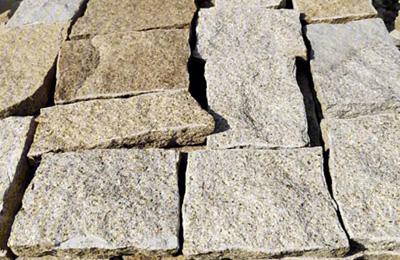Granite is a very hard, durable, and dense natural stone that is commonly used in construction and architectural projects. It is composed primarily of quartz, feldspar, and mica, and can come in a range of colors and patterns. Granite is mined from quarries all around the world and is processed in a number of ways to create various products such as countertops, flooring, and building materials. In this article, we will discuss the process of granite crushing, grinding, and processing.

Granite Crushing:
The first step in granite processing is to remove the stone from the quarry. This is accomplished by using a variety of tools, such as pneumatic hammers, drills, and explosives. Once the stone is extracted, it is transported to the processing plant where it is crushed into smaller pieces using jaw crushers, cone crushers, or impact crushers. The size of the crushed granite is usually determined by the intended use of the product. For example, larger pieces of granite are typically used for building materials, while smaller pieces are used for countertops or decorative purposes.
Granite Grinding:
After the granite is crushed into smaller pieces, it is then ground into a fine powder. This is accomplished by using a variety of grinding equipment, such as ball mills, vertical roller mills, and Raymond mills. Ball mills are typically designed with a rotating drum, partially filled with steel balls, and the material is fed into the drum through a hopper. Vertical mills are more versatile as they can be used for dry or wet grinding and can be operated at a lower cost than ball mills. The ground granite powder is then collected and stored in silos or other storage containers. The grinding process can be adjusted to produce different particle sizes depending on the intended use of the product.
Granite Processing:
After the granite is crushed and ground, it can be used for various applications. One of the most common uses is for building facades, where it is used as cladding. It is also widely used for flooring, as it is a durable and low-maintenance material. In addition, granite is commonly used for countertops, where it provides a durable and attractive surface. It is also used for monuments and memorials, where its durability and ability to retain its appearance over time make it an ideal material.
Granite processing can also involve the use of water and chemicals to achieve the desired finish. Polishing is a popular method used to achieve a smooth and glossy finish. This is achieved by using a series of abrasive pads that progressively refine the surface of the granite. The pads are usually made of diamond or other hard materials, and they are used in conjunction with a polishing machine.
In conclusion, granite processing is a complex and multi-step process that involves a number of different stages, from quarrying and crushing to grinding and processing. The end result is a range of high-quality products that are used in a variety of applications, from building materials to decorative items. The process of granite processing requires specialized equipment and skilled professionals to ensure that the final product meets the required specifications.
